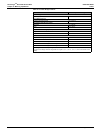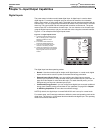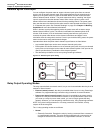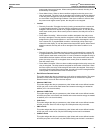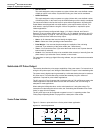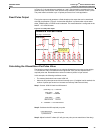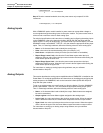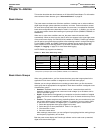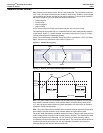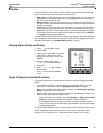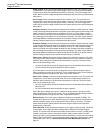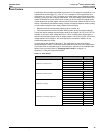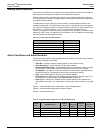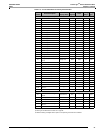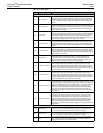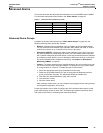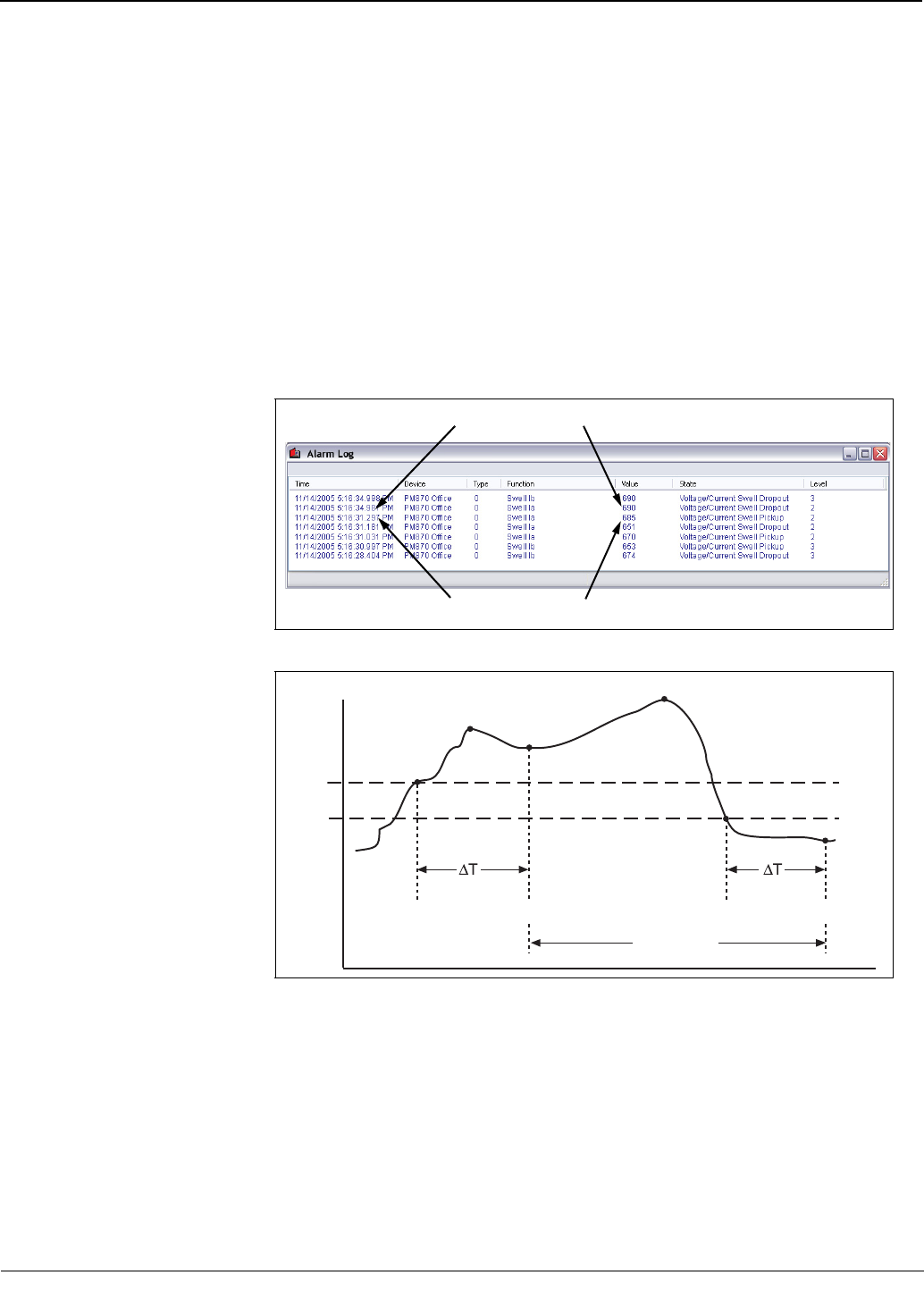
© 2011 Schneider Electric. All Rights Reserved.
PowerLogic
TM
Series 800 Power Meter 63230-500-225A2
Chapter 6—Alarms 3/2011
46
Setpoint-driven Alarms
Many of the alarm conditions require that you define setpoints. This includes all alarms for
over, under, and phase unbalance alarm conditions. Other alarm conditions such as digital
input transitions and phase reversals do not require setpoints. For those alarm conditions
that require setpoints, you must define the following information:
• Pickup Setpoint
• Pickup Delay
• Dropout Setpoint
• Dropout Delay
NOTE: Alarms with both Pickup and Dropout setpoints set to zero are invalid.
The following two figures will help you understand how the power meter handles setpoint-
driven alarms. Figure 6–1 shows what the actual alarm Log entries for Figure 6–2 might
look like, as displayed by PowerLogic software.
NOTE: The software does not actually display the codes in parentheses—EV1, EV2, Max1,
Max2. These are only references to the codes in Figure 6–2.
EV1—The power meter records the date and time that the pickup setpoint and time delay
were satisfied, and the maximum value reached (Max1) during the pickup delay period
(T). Also, the power meter performs any tasks assigned to the event such as waveform
captures or forced data log entries.
EV2—The power meter records the date and time that the dropout setpoint and time delay
were satisfied, and the maximum value reached (Max2) during the alarm period.
The power meter also stores a correlation sequence number (
CSN) for each event (such as
Under Voltage Phase A Pickup, Under Voltage Phase A Dropout). The
CSN lets you relate
pickups and dropouts in the alarm log. You can sort pickups and dropouts by
CSN to
correlate the pickups and dropouts of a particular alarm. The pickup and dropout entries of
an alarm will have the same CSN. You can also calculate the duration of an event by
looking at pickups and dropouts with the same
CSN.
Figure 6–1: Sample alarm log entry
Figure 6–2: How the power meter handles setpoint-driven alarms
PLSD110219
(EV1) (Max1)
(EV2) (Max2)
PLSD110143
EV1
Max1
EV2
Max2
Pickup
Setpoint
Dropout
Setpoint
Pickup Delay
Alarm Period
Dropout Delay



